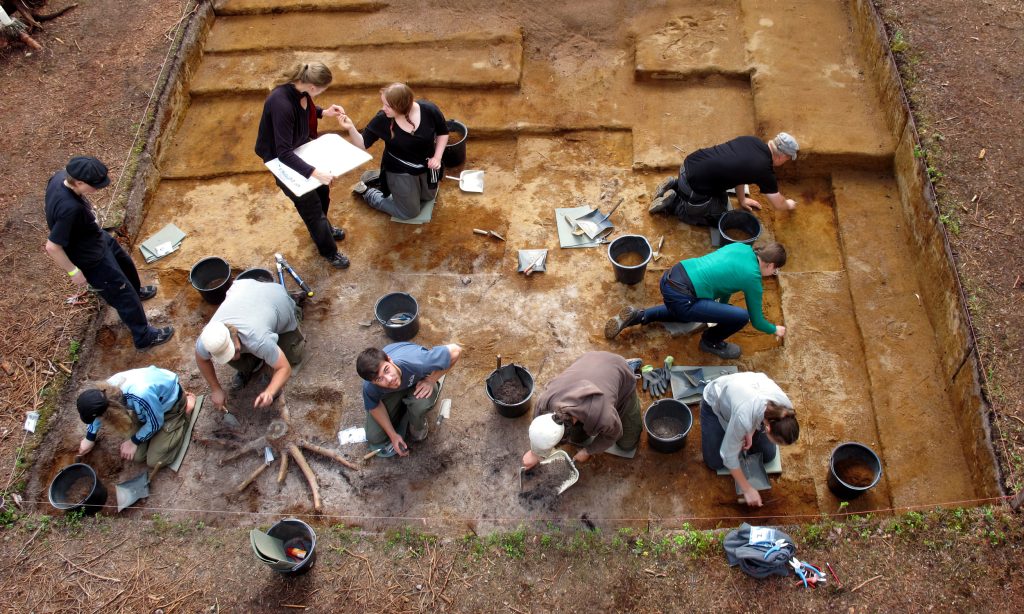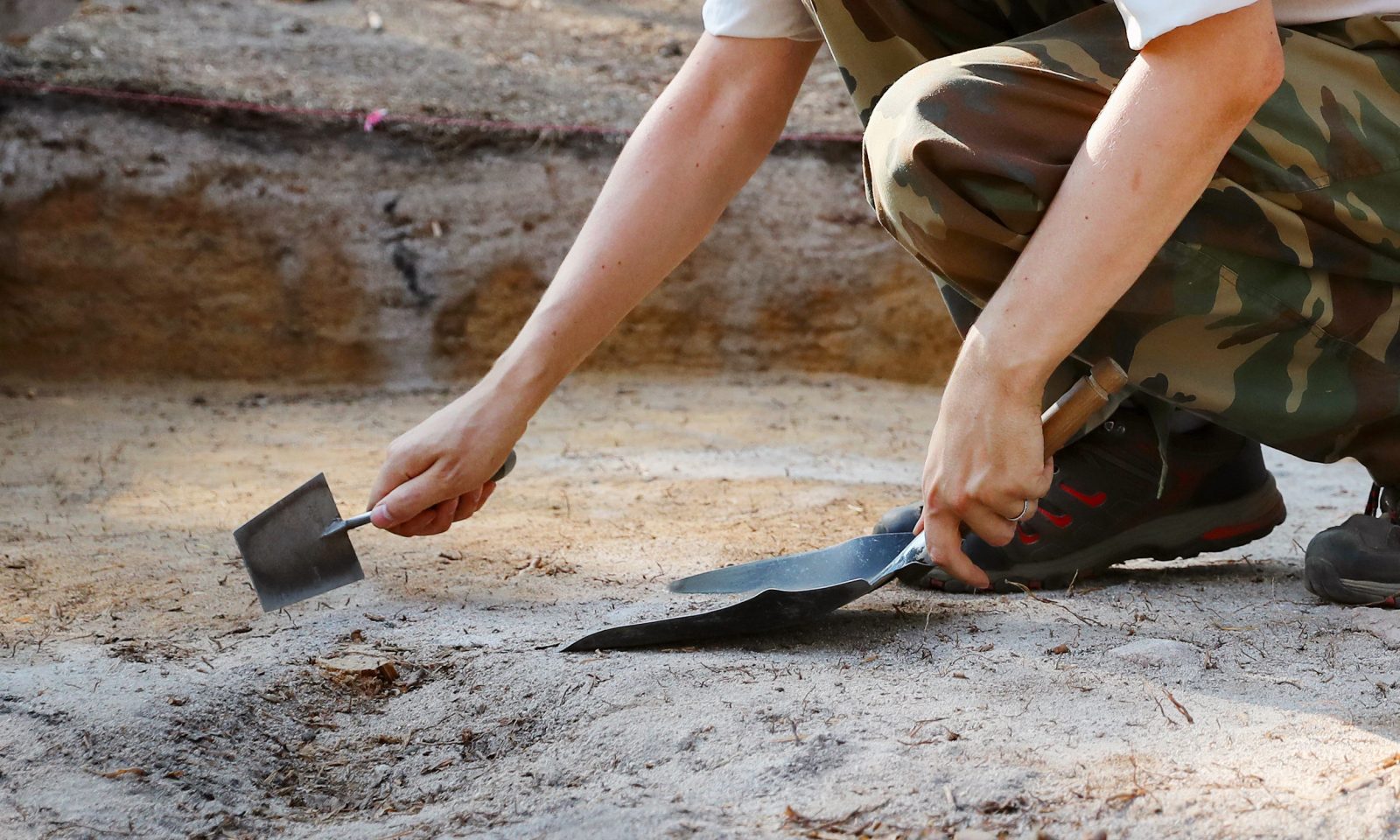Stone Age sites are immovable antiquities protected by the Antiquities Act. Therefore, in order to start an archaeological excavation, a research question must be formulated, and an excavation permit must be issued by the Finnish Heritage Agency. Simply acquiring new information is not enough to formulate a research question; instead, excavations must be part of a larger study. This is because excavations will eventually destroy the site, even if the area is restored to its former appearance when the excavations are finished. All that will remain is the material recovered from the excavations and the documentation produced in various ways. Excavation permits are only issued to archaeologists. Read more from the website of Finnish Heritage Agency.

A dwelling depression is being excavated in sections during the public excavations at Kierikinkangas. The centre of the dwelling depression is in the lower left corner.
Once the decision to excavate a site has been made and excavation has begun, finds are often made very close to the surface, just below the peat layer. The cultural layer, the visible layer of human activity on the ground, is often thin at Stone Age sites because the sites have been in use for a relatively short period of time, preventing the accumulation of many layers. In historic urban archaeological excavations, the oldest layers may be several meters deep, as the same area may have been used for centuries, but at Stone Age sites it is rare to have to excavate more than half a meter.
Excavations are usually made in 5 cm layers and the location of each find is marked on a find map. Between each layer or level of excavation, the surface of the ground is cleaned, photographed and drawn. Settlement pits are often excavated in square blocks so that the cross-section (the profile) of the pit and what it contains can be seen from the side.
